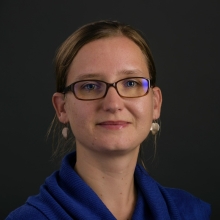CEE Seminar: How Will Future Climate Change Impact Prescribed Fire Across the US?

Staff Scientist
Los Alamos National Laboratory
Abstract: Use of prescribed fire to manage ecosystems is increasing across the United States, with more than 50% of annual area burned attributed to prescribed fire. However, as climate warms, changes in temperature, precipitation and vapor pressure deficit are bound to impact temporal and spatial patterns of fuel loads and their flammability, as well as fire safety. We examine how future climate change could affect opportunities for prescribed fire. We combine climate projections with information on prescribed burning windows for ecoregions across the conterminous United States to compute the number of days when meteorological conditions allow for the safe and effective application of prescribed fire today and under future climate conditions. Although prescription windows shrink across the ecoregions of the Eastern United States due to rising maximum daily temperatures, opportunities for prescribed burning increase in the Northern and Northwestern United States, driven primarily by rising minimum temperatures and declining wind speeds.
Bio: Alex Jonko is an atmospheric scientist interested in modeling fire-climate interactions. She is a staff scientist in the Earth and Environmental Science Division at Los Alamos National Laboratory. She holds a bachelor's/master's equivalent degree in meteorology from the University of Bonn, Germany, and a doctorate in atmospheric science from Oregon State University. In her free time, Jonko enjoys exploring the outdoors around Los Alamos on foot, bike and skis, spoiling her dog, fermenting vegetables and baking sourdough bread.
Share
Upcoming Events
-
MSE 298 Seminar: Translational Neuroelectronics
-
CBE Seminar: Water Structure and Computational Design of Water-mediated Solute-surface Interactions
-
CALIT2 Distinguished Lecture: Strategic Directions for Electronics Packaging
-
MSE 298 Seminar: Science-Based Advanced Manufacturing of Metals and Alloys
-
EECS Seminar: Transient Electronics – From Bioelectronic Medicines to Environmental Monitors
